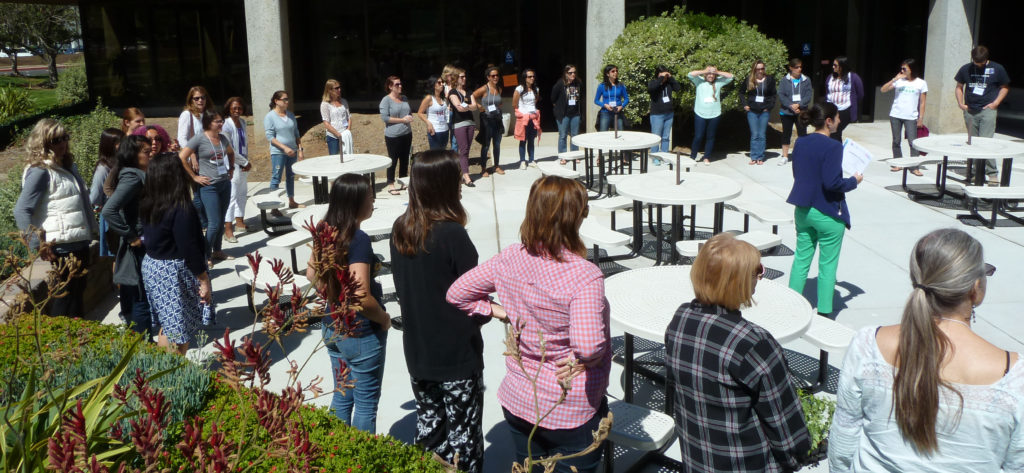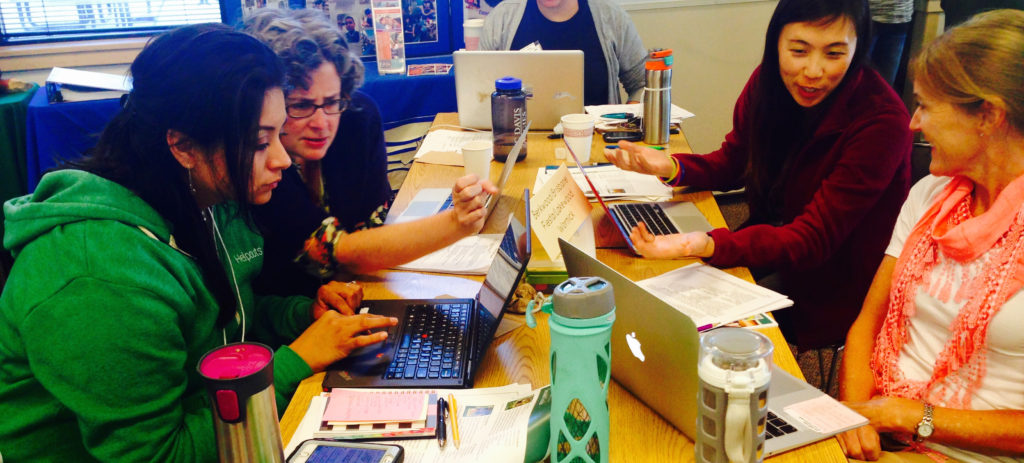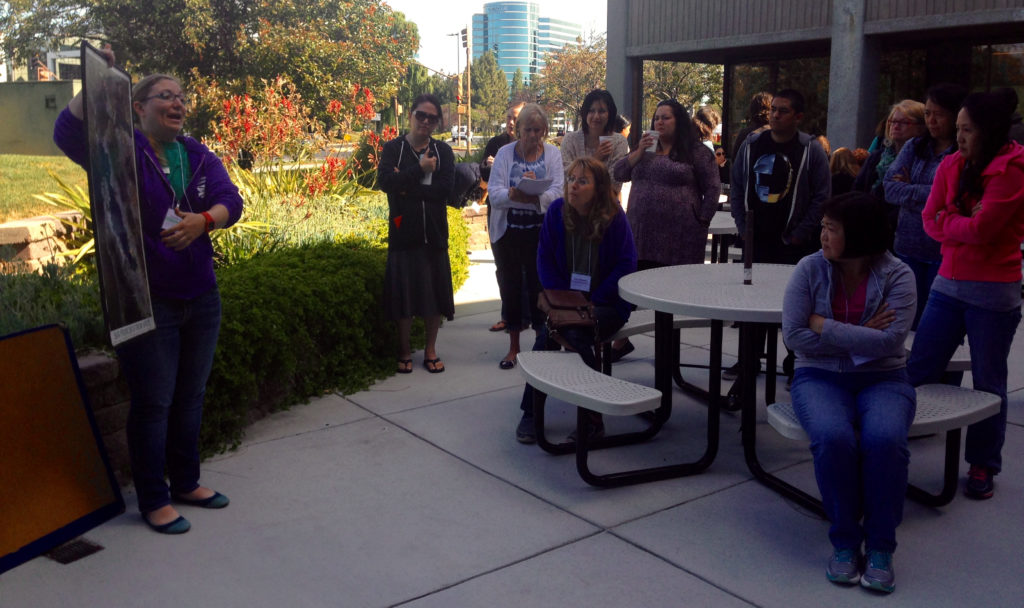It has been almost a year since I first attended the San Mateo Environmental Learning Collaborative (SM ELC). Focused on the Next Generation Science Standards (NGSS), SM ELC is a unique opportunity hosted by Ten Strands, SEER, and the San Mateo County Office of Education—STEM Center offered to K–8 teachers. As part of SM ELC, teachers participate in a professional learning collaborative focused on teaching to NGSS using project-based learning and the local environment.

At this year’s SM ELC I was there as a mentor helping others develop their units. How did I go from someone who had barely heard of NGSS at an early roll-out (someone unable to translate that experience into new learning in the classroom) to someone tasked with guiding others in developing units? How did I go from being completely overwhelmed by the alphabet of acronyms to having them roll of my tongue with ease?
One cannot underestimate the value of the professional development provided by Ten Strands, Dr. Jerry Lieberman, and Grace Lieberman. There is something fundamentally different about their approach to teaching teachers about NGSS. Sure, it probably has a little to do with having more exposure. I remember reading that students have to be exposed to new vocabulary about a dozen times before they can be expected to own it. I am sure that is equally true for teachers. But it goes deeper than that.
Many of the professional development classes I have attended over the years are really more like presentations than development. They do very little to actually develop the teachers. They don’t model good teaching practices. They give some exposure to the topic at hand, maybe show a publisher’s attempt to meet a need, and send teachers home full of new information—only a small fraction of which will see immediate implementation in the classroom. Why? Too much all at once and not tailored to teachers and the students is one possible reason.
Both as a teacher and as a trainer for the Boy Scouts, I try to follow the EDGE method. Many other teachers I know do also, though they may not call it that. When teaching a new concept or skill, first explain. Then, demonstrate, guide, and enable. The vast majority of professional development for teachers does a very good job with the first two: Explain and Demonstrate. Here is the problem/challenge and here is our program/book/system that will help you. However, that is where it ends.
SM ELC is different. Over three days, teachers got explanations and demonstrations, but they also got guidance (the “G”) and were enabled (the “E”). Jerry and Grace (and this year the team from the STEM Center at the San Mateo County Office of Education, led by director, Rebecca Vyduna) guided us step by step through what project-based learning and NGSS are and what they aren’t. Again this year, there were nonformal providers trained in NGSS to work with teachers in developing quality units.
There is also the added element of ongoing support for the teachers as they move through implementation in the classroom. They are not left alone to try to figure it out. Jerry and Grace, the non-formals, and the other teachers all serve as resources and sounding boards. This creates an environment in which teachers are much more likely to implement their Units of Study as they are supported and accountable. They are also more likely to implement new learning if it is authentic. After SM ELC, teachers feel this way because they are able to create units that fit their needs, match their styles, and are realistic.
An analogy that comes to mind is the comfy shoe. We all have that pair of slippers, UGGS, old shoes, or flip flops that we love to wear. We know they are not necessarily good for us, aren’t as supportive as they should be, and may even be out of style but they are so comfortable, we keep getting them out. It is too hard to find another comfy pair. It takes too long to break new ones in. So, we keep wearing them. Our old science lessons may be like those comfy shoes. We have all the supplies. We know how to teach them. We have had them for years. However, they are no longer “in style.” They are not supportive of our students’ needs. It is time for new lessons. However, we won’t necessarily be comfortable in them right away. You have to walk around in them a bit. But given time, they may become your new favorite.
I am excited to announce that we are running a mini-SM ELC with a cohort of teachers from my school, Lomita Park Elementary. I will be mentoring again, and am looking forward to seeing what the teachers at my school develop with their Units of Study. More to come in a future blog post on this project!


